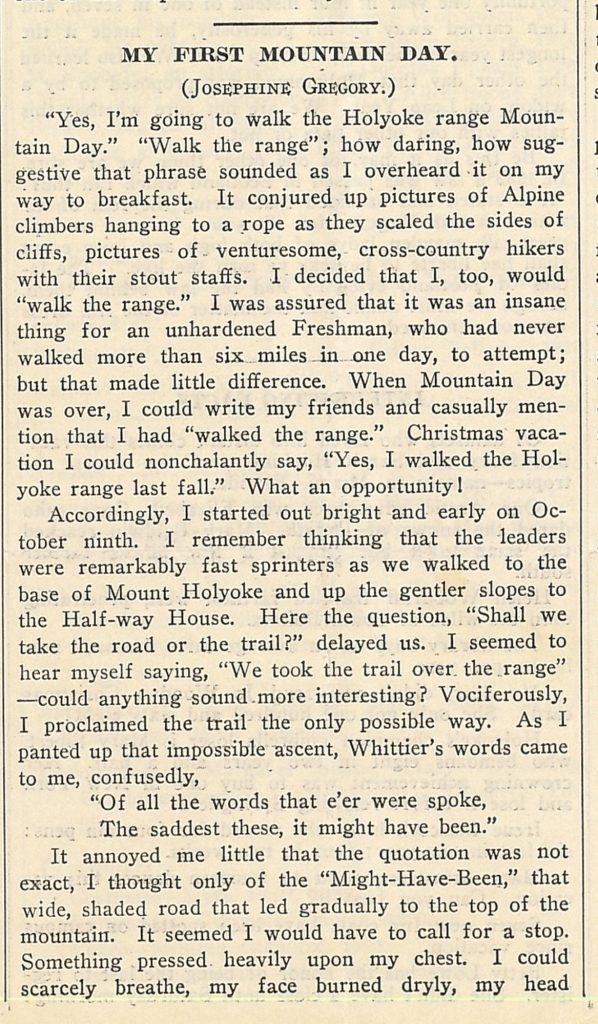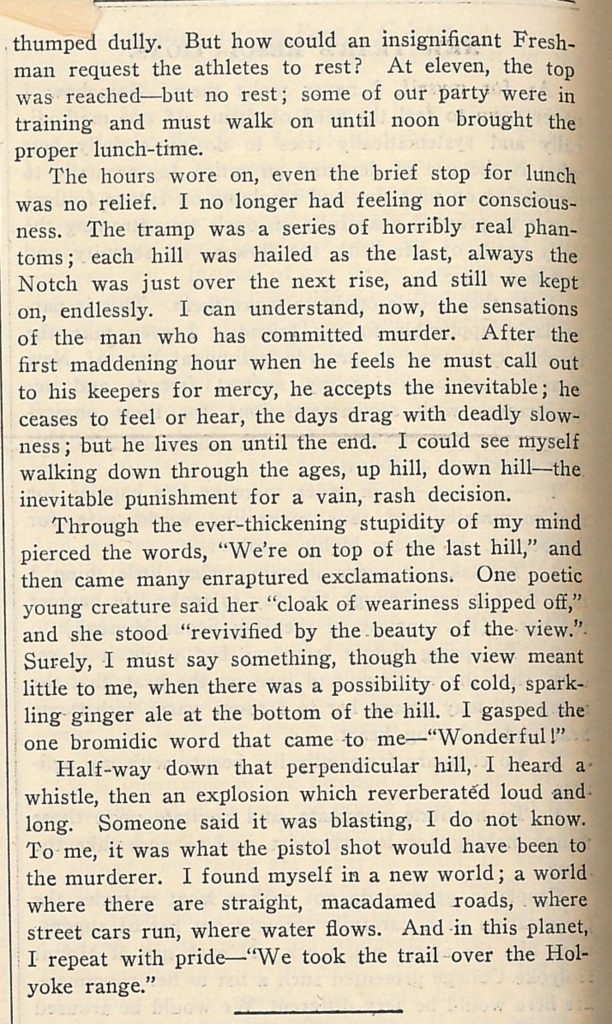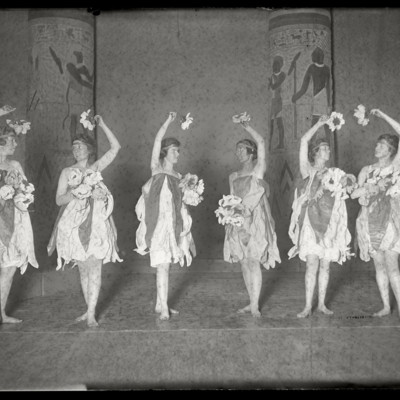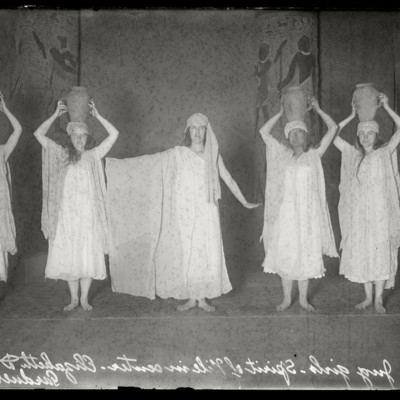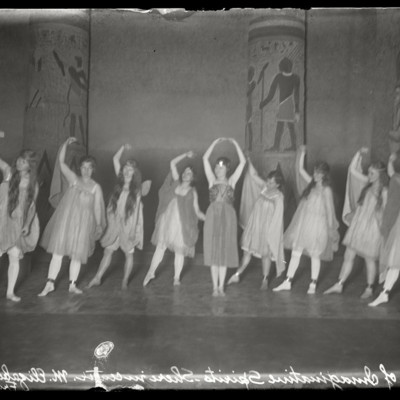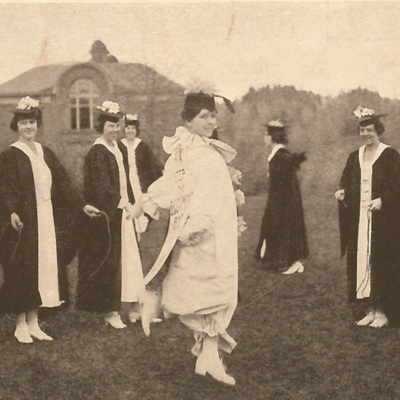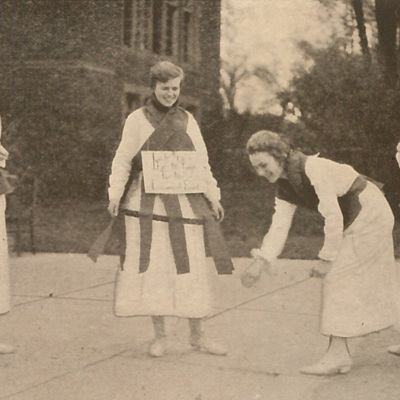Leaving a Legacy: Student Traditions
Traditions at Mount Holyoke have been integral in creating the strong sense of community and companionship that the College encourages among its students and faculty. Though many of the same traditions continue to be celebrated today, some have been tweaked in small ways, while others remain memories of the College’s past.
Mountain Day, a day that students excitedly anticipate in the fall of each year, was described as a day “which comes on some beautiful day in October” in the 1920 Student Handbook. The description continues; “it is the one day in the college year when the campus and all the buildings thereon are absolutely deserted. Everyone adjourns to the woods or mountains for picnics and long tramps.”
Senior Show, today known as Junior Show, was a show that included an original play written and directed by the senior class. In 1920, the tradition was passed on to the junior class after the final production by the seniors, a play titled “Popo” that included “a remarkable chorus and ballet work.” The show has evolved to be more humorous and light-hearted today, as it usually includes some parody of campus life as a MoHo.
Senior Rope Jumping was a tradition that was routinely celebrated as a day in early May when the seniors would march out to the front of Williston Hall and skip rope, usually donning white gowns. The Student Handbook of 1920 describes this tradition as a day when the seniors would “discard their dignity (though you might not believe it possible)”. Without fail, on the day following this, the juniors would gather in front of the library and engage in top-spinning while singing to the freshman, who in response sang top-spinning songs to the juniors. Though no longer celebrated today, the enthusiasm and excitement that students felt towards these traditions remains warmly in the collective memory of the College’s past.
Student Slang
Slang terms were being thrown around on campus in 1920, too – maybe a bit more mild and appropriate than the ones today, but it was an inner-lingo among students nonetheless. A small guide to help first years understand the student slang was even included in the Student’s Handbook of 1920, and one or two of the terms are still regularly used on campus today.
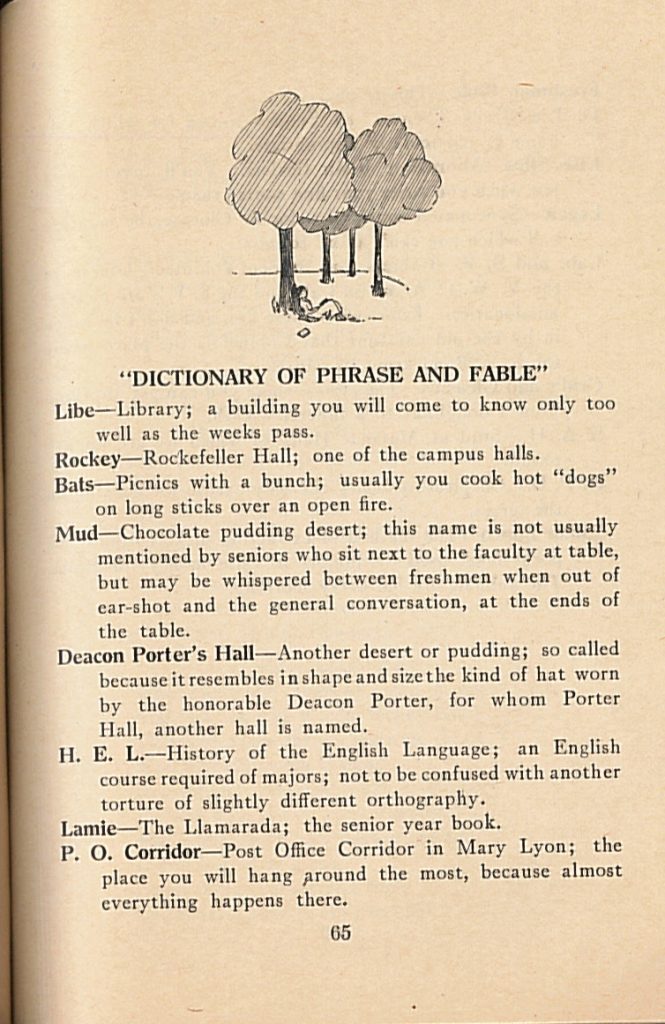
Some highlights from the list include:
Deacon Porter’s Hall: Another desert or pudding; so called because it resembles in shape and size the kind of hat worn by the honorable Deacon Porter, for whom Porter Hall, another hall is named.
Grid’s and Gleasies: The stores where you can get anything from a doughnut to a funeral wreath.
H.E.L: History of the English Language; an English course required of majors; not to be confused with another torture of slightly different orthography.
